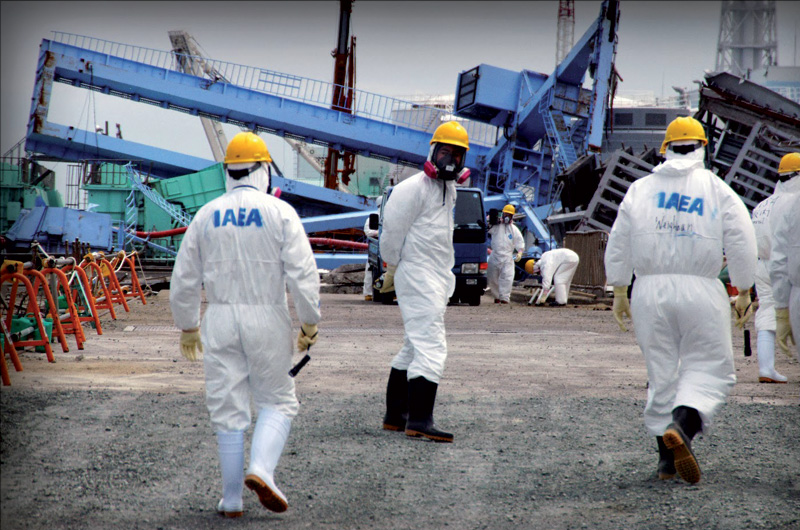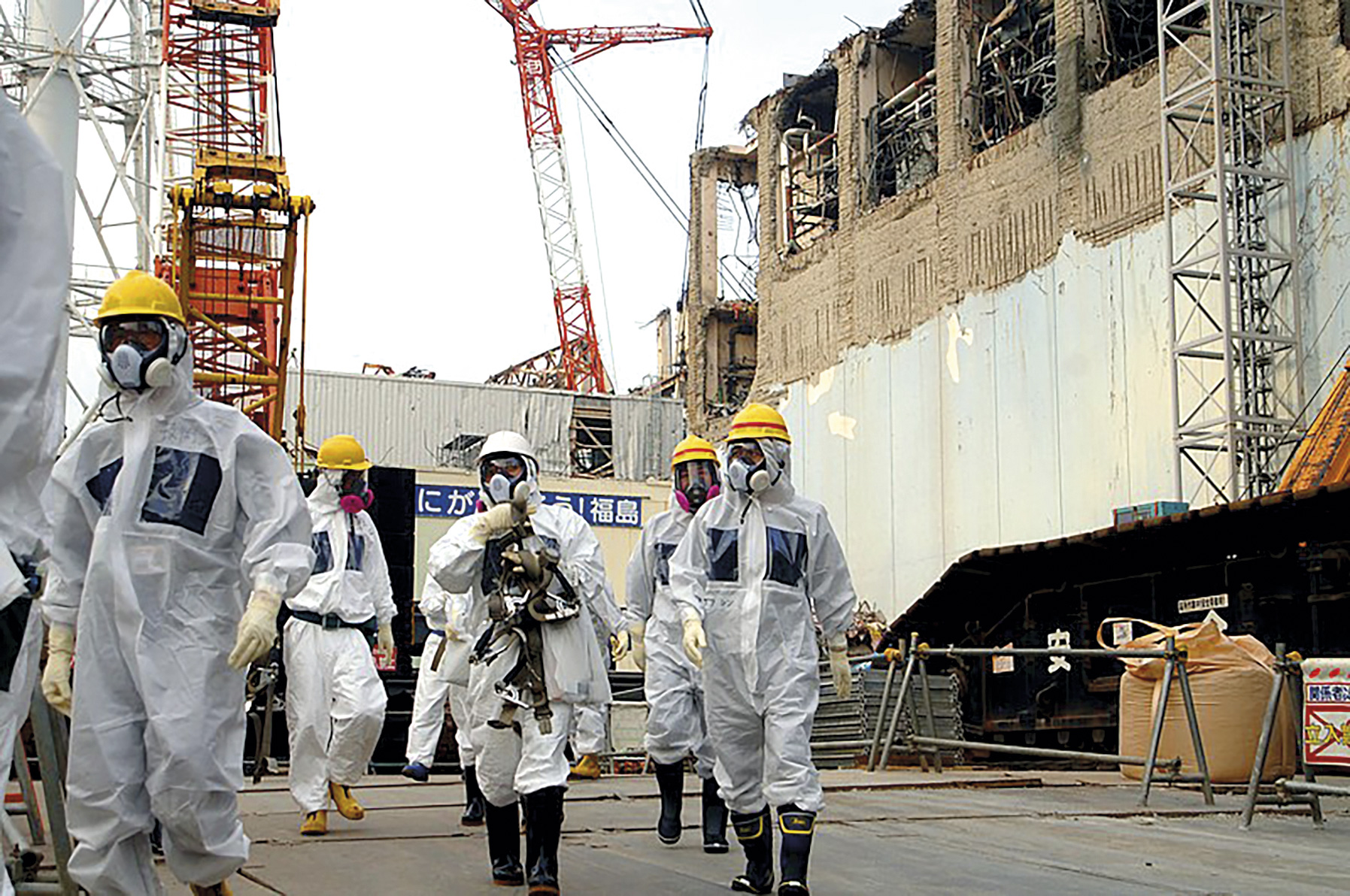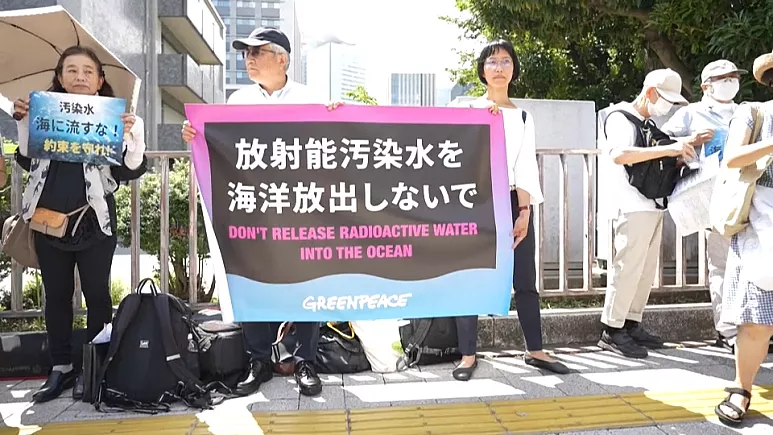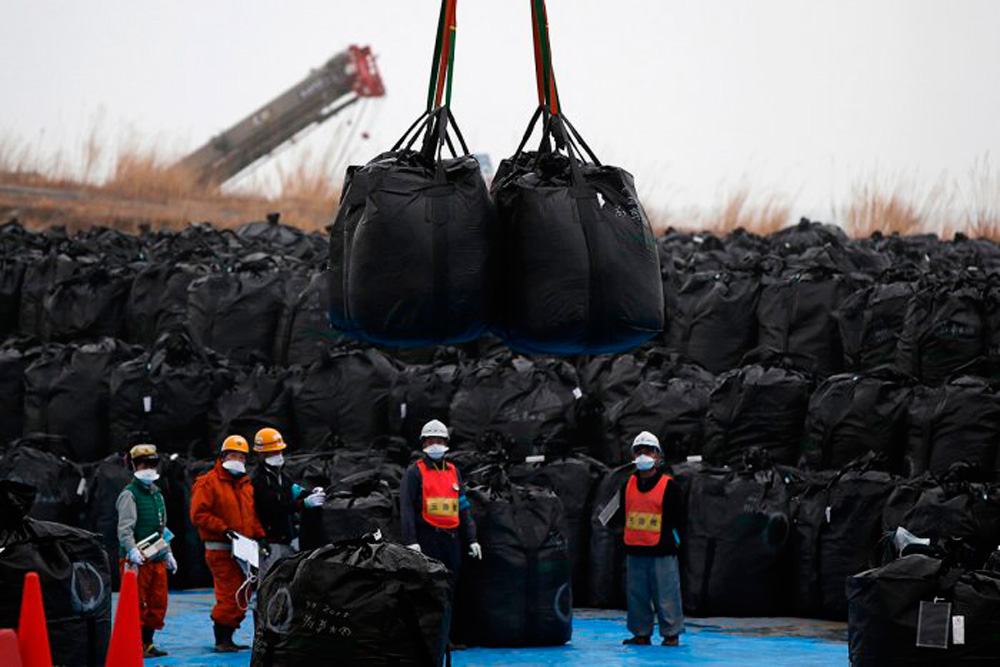Society
Environment
Politics
Economy
Culture
Basque language
Feminism
Education
International
Opinion
friday 23 may 2025
Automatically translated from Basque, translation may contain errors. More information here. 
Fukushima becomes a test field

Langileak Fukushiman. (Arg: John Powers)
According to the company that manages the Fukushima nuclear power plant, TEPCO, the radioactive water that is poured into the sea has not polluted the coast of the area, proof of this mentions the regular checks carried out at sea, three and fifteen kilometres away. On the same day that TEPCO pronounced itself, a new study was published measuring the highest concentration of cesions ever recorded one kilometer from the coast.
This is just one example of what's happening in Fukushima. What is said does not have sufficient funds or changes in the short term.
Another example: According to TEPCO, there are currently more than 350,000 tons of water accumulated below the plant, which will rise to 800,000 in 2016. In order not to pour that water into the sea, last year they began building a giant wall underground on the coast, and the work is expected to be completed over the next year. In addition, it is anticipated that the cleaning system for most radioactive substances containing the accumulated water will be ready.
But behind this information provided by TEPCO you can also do the following reading: This is the amount of water used in refrigeration systems for the 800,000 tons themselves, but what is the amount added by the rains? The wall of non-discharge of radioactive water into the sea can, in principle, prevent water from flowing out into the sea, but can that be assured, in the longer term, in these large spaces? At what cost? The water cleaning system aims to clean 62 of the 63 elements, but at the moment only one in three units works, as the breakdowns occur one after the other.
This issue has, at least in its misfortune, a positive aspect: Since Fukushima is a test laboratory, in a few years’ time human beings will know better the technology to control radioactivity. Meanwhile ...
Most read
Using Matomo
#1
Xabier Letona Biteri
#2
#3
#4
Estitxu Eizagirre
#5
Xabier Letona Biteri
You are interested in the channel: Fukushimako istripua
Some experts point out that the discharge of Fukushima water poses no significant risks
Radiation and nuclear safety experts point out that the radioactive water being poured from the Fukushima Daiichi nuclear plant is not a significant threat either to marine living beings or to people. This has been pointed out in a study published in the journal Science.
2023-09-12
Jenofa Berhokoirigoin
Fukushima: past accident, severe damage and solutions yet to be discovered
Inevitably, on 24 August, the waters of the Fukushima power plant have begun to be thrown into the sea, as 97 per cent of the contaminated water tanks are full and water is added without cutting, with 140 tonnes per day. Despite being "decontaminated" water, the population remains... [+]
2023-08-23
Ilargi Manzanares
Polluted Fukushima waters begin to pour into the sea
The decision of the Japanese Government has sparked protests in the country and, among other things, China has criticised the decision. The consequences of the 2011 nuclear accident continue.
2023-07-10
Mikel Aramendi
Tritium diplomacy
2023-07-05
Urko Apaolaza Avila
Japan begins to launch the radioactive water of Fukushima into the sea, between the protests of fishermen and ecologists
A report by the International Atomic Energy Agency has approved Japan to distribute contaminated water used to cool the Fukushima nuclear power plant at sea since the 2011 disaster. The Japanese Government announced two years ago the plan to discharge over 1.25 million tonnes of... [+]
2021-04-13
ARGIA
The Government of Japan approves the dumping of contaminated water from Fukushima
On 13 April, the Japanese Government decided that it would see to the Pacific Sea the radioactive water accumulated in the nuclear power plant that suffered the accident in 2011 in Fukushima. The operation shall last for two years. These waters, of 1.25 million tonnes, which are... [+]
2021-03-26
Jenofa Berhokoirigoin
"Radionegationism" or resilience: Tactics to transform fukushima into habitable
The accident occurred ten years ago at the Fukushima nuclear power plant in Japan, Daiichi, caused by the tsunami of March 11, 2011. Following the 1986 Chernobyl accident, gravity is repeated at 25 years later. The decade has passed and it seems that citizens can return to the... [+]
2021-03-11
Pello Zubiria Kamino
Children in Fukushima also have an Environmental Center to learn how nice pollution is
2021-03-11
ARGIA
Fukushima 2011-2021: The top 10 lessons intended to spread popular Japanese movements
This 11th of March marks the 10th anniversary of the breakdown of the four reactors of the Fukushima Atomic Plant, Daiichi, which were first shaken by the earthquake and then by the tsunami. The coalition of various Japanese institutions, researchers and grass-roots movements... [+]
2020-10-16
Axier Lopez
The Japanese Government will throw a million tonnes of contaminated water into the sea in Fukushima
The Japanese Government has reported that it has decided to release one million tonnes of contaminated water from the Fukushima Daiichi nuclear power plant. Contaminated water since the accident in 2011 has been collected in water tanks and has become a serious problem.
2019-09-10
Iñaut Gonzalez de Matauko Rada
Japanese Government wants to pour contaminated Fukushima water into the Pacific from 2022
The Japanese Minister for the Environment has said that water accumulates in reactors since the 2011 disaster and is running out of place.
2019-03-14
Pello Zubiria Kamino
The children of Fukushima also have an 'Environmental Space' to learn how nice pollution is
It is the Creative Environment Space, in which children in the province of Fukushima learn how the human being lives between radiation from time to time. There are more similar exhibitions, organized by the governments of Japan as the region. They say that the authorities must... [+]
2019-03-11
ARGIA
8th Anniversary of the Fukushima Disaster: TEPCO shows new images of reactors (videos)
On 11 March, eight years have passed since the most serious nuclear accident in the history of Fukushima in northeastern Japan. Last year, 2018, TEPCO offered the first images of a second reactor that is considered the most damaged of the four, after this year achieving the... [+]
Eguneraketa berriak daude

























